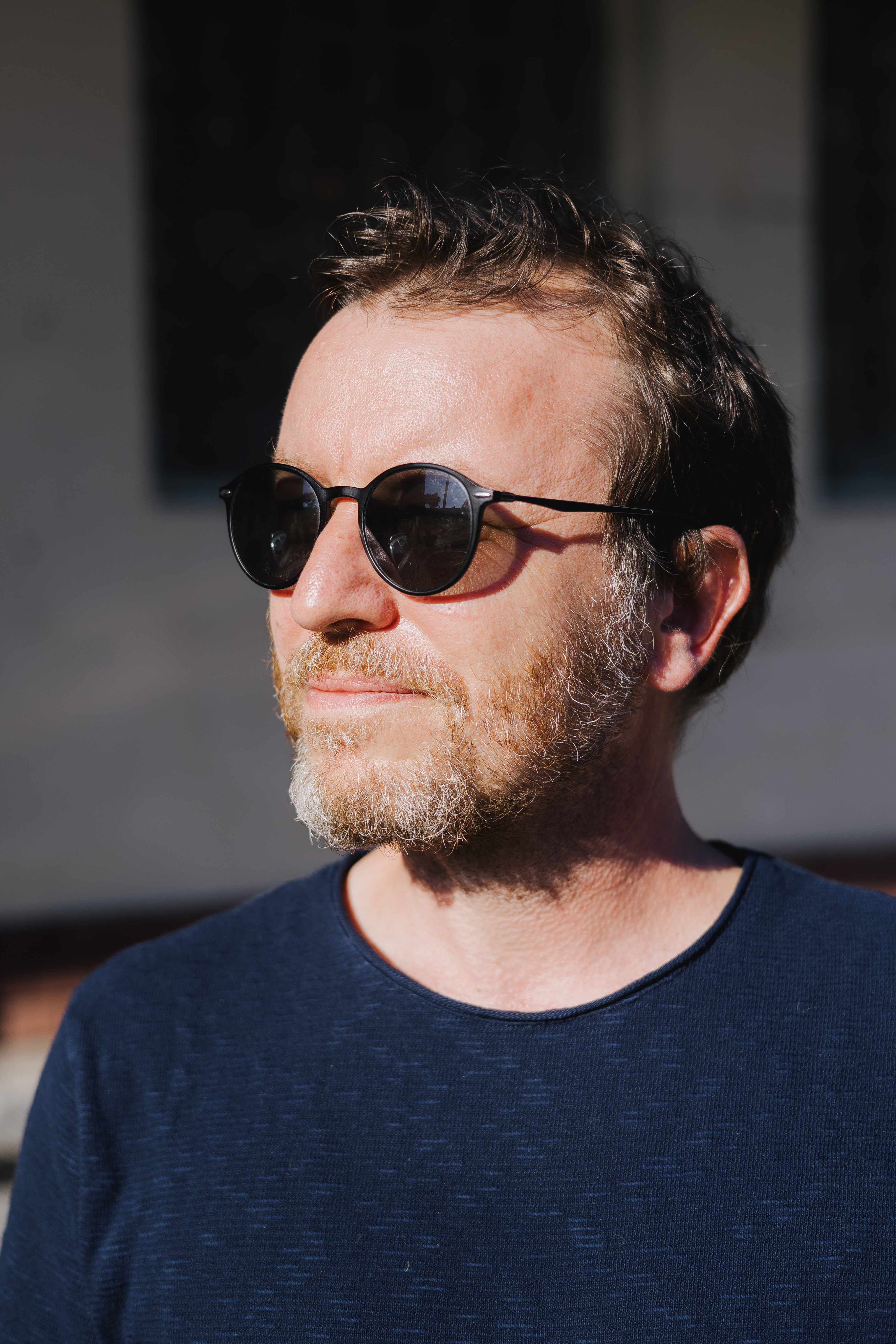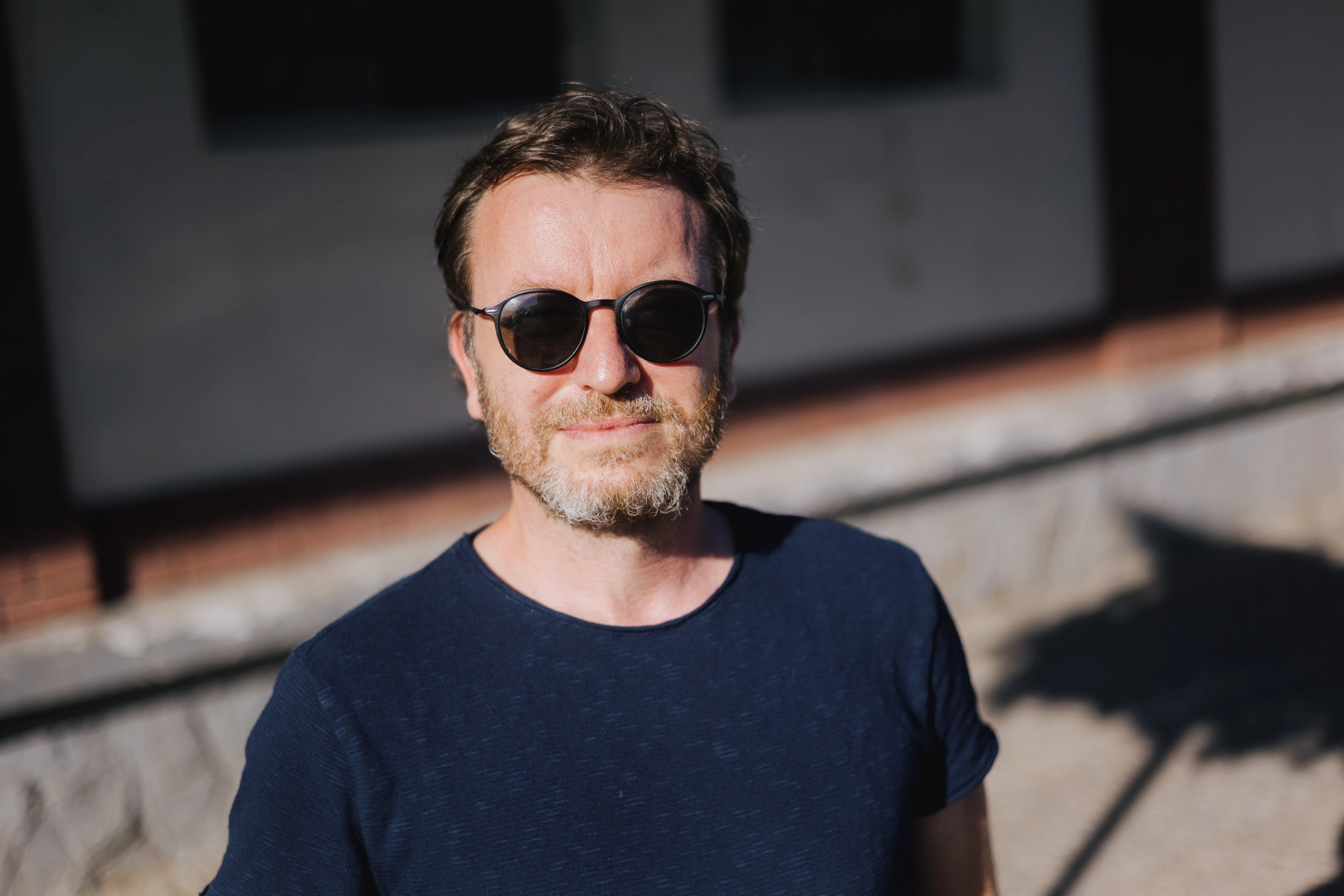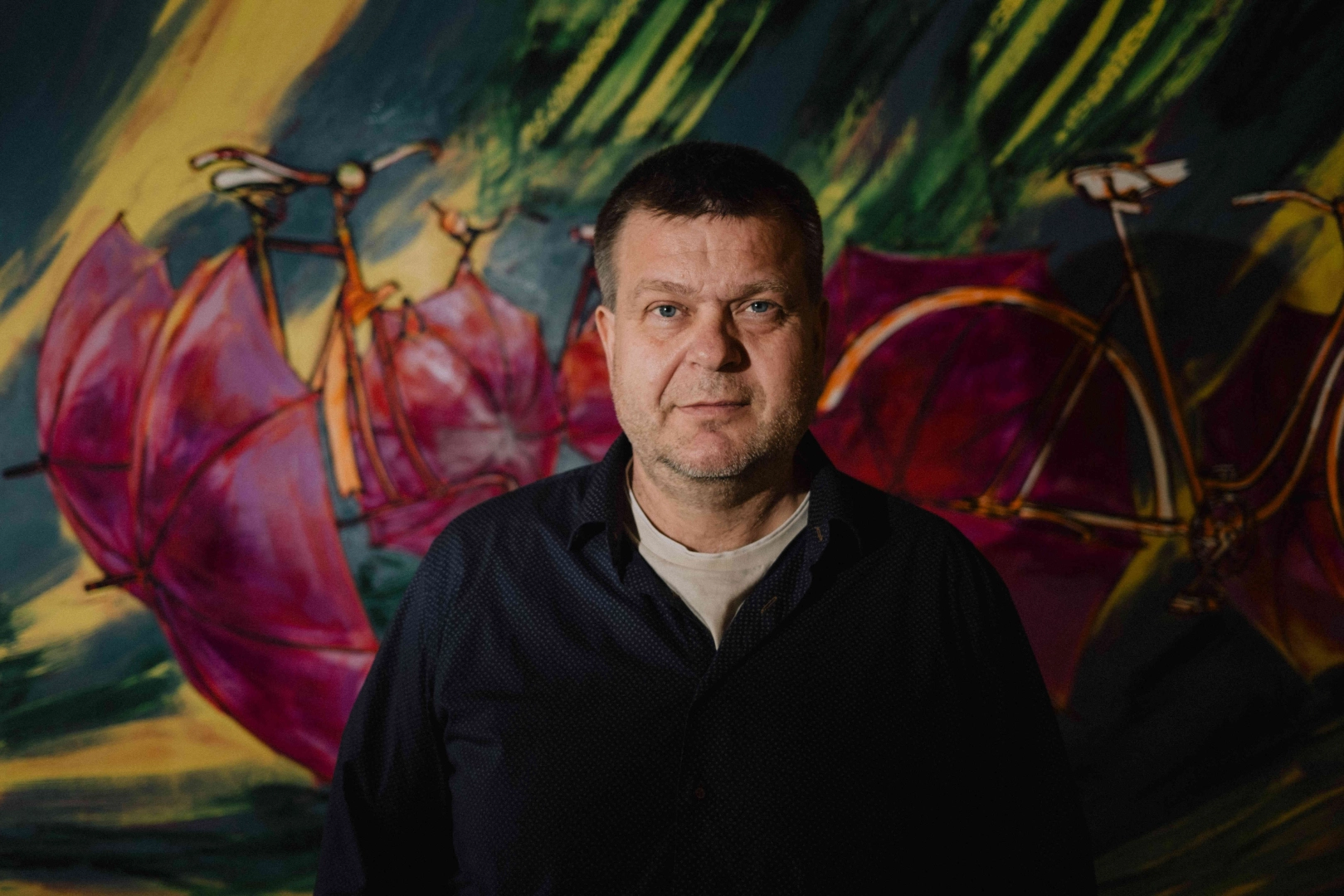The Sport in Art platform is currently preparing the first exhibition of the Art Grand Slam project. Every year a new curator will come up with a new theme creating a space for a dialogue between art and sport. The historically first one is overseen by curator Petr Vaňous. The exhibition will take place in February 2024 and then head to the Czech Centre in Paris for the Olympic Games. How did the curator tackle the theme and what can we look forward to at the exhibition?
When the organizers of Art Grand Slam approached you as the curator of the first-ever exhibition of this project, what was the first thing that came to your mind, did you immediately say you were in?
I had to think long and hard about combining sport and art, because I had never done a project like this, I had never even thought about it in this way. I was thinking about the relationship between movement and art, of course, or movement and form and so on. I was actually pleasantly surprised. Then I searched in my memory. I remembered that I used to play sports too, I even swam competitively and ran the relay quite successfully, so for me, it was a bit of a step back in time and maybe it was on that basis that I decided to accept the offer. The theme of the project has a nostalgic dimension for me, but at the same time, I am also interested in sports as a spectator.
On what basis did you select the artists for the Art Grand Slam exhibition? If I had to name names, you chose Michael Rittstein, Milena Dopitová, Dalibor David, Lubomír Typlt, Paulina Skavová, Michal Cimala, Pavel Šmíd, Alena Andrlová, Jakub Janovský and Jitka Petrášová.
I was trying to pick artists whose work has featured athletics or sports in the past. Some of them are also active athletes. Others not at all! Most importantly, I was interested in the link to the subtitle of the project: 'Inside Movement'. A certain level of psychology plays a role here. When one enters a competition, one goes through a whole spectrum of feelings that provoke or can provoke something in a person. Why do they decide to do sport recreationally, or even professionally? I am interested in this decision from a more complex point of view. Why does one have this ambition? And what does one experience when they fulfil it? I think this theme can be traced in some way in art too. Based on this, I chose artists who might be close to the theme or have a certain sensibility that is either on the side of sports or opposed to it.
.jpg)
Do you find the overall concept of the Art Grand Slam project interesting - combining a curatorial selection of established artists and those selected through an open call? It has the advantage of discovering new talents within such a narrow theme.
Certainly. I think it is a stimulating concept. The established authors will be complemented by the young artists. We are uncovering renewable (re)sources of movement, this time in the artistic sphere.
Is it going to be you who will judge the open call for artists under 30?
Yes, for the exhibition to make sense as a whole, I will be selecting the open call as a curator.
The exhibition also has a specific format in that it will first take place in the Smetana Q gallery in Prague and then will be moved to the Czech Centre in Paris for the Olympics. Are you looking forward to it? After all, they are two different places, with slightly different visitors.
I'm sure there will be a different audience and different spaces. That's why I don't see the exhibition as a premiere and a repeat of the same project, but as two autonomous outcomes that will respond to two different environments. I don't know exactly how they will differ yet, but they will be different.
The first-ever Art Grand Slam exhibition will be under your direction and will carry the title “Inside Movement”. Could you tell us a little bit about the theme of the exhibition?
For me, Inside Movement symbolises that not only the athlete but also the artist is in the middle of some activity or action when they create a painting, a sculpture, anything. They are inside a situation that's being played out. During this process, they forget themselves for a moment, just like an athlete during an athletic performance. They are in a situation which they want to solve with the best possible outcome for themselves. The creative practice itself is partly a conscious and partly an unconscious process, but it is movement. It cannot be anything passive, but rather an active search. When "something" is found, the process is concluded and an artistic form is created, a work of art, an artefact. And that's what interests me because I think there are certain analogies in these two worlds. I'm going to try to find them with this project, both for the audience and for myself.
How does it feel to work with a theme that combines art and sport? Do you look at it as a kind of refreshment of the contemporary art scene or as something that has always been there?
Above all, the exhibition should not be an illustration of sports. My choice of authors is related to this. I didn't want one to do athletics, another football, another swimming... On the contrary, I want the movement itself to be the theme. Not just sport itself, or the relationship between sport and art, but also sport as an act of experiencing. I think that's the main subtext of my concept. I see a much broader potential in this than in illustrating individual Olympic disciplines.
Linking art and sports can open up various topics. I think it's quite a good tool to draw attention to certain things.
In addition, there are topics such as competition or performance. Concepts that are of course related to sport, but also related to the whole of contemporary society. They can initiate many questions and perhaps it is therefore a good idea to critically revise them in some way. I think that it is the relationship between art and sport that may have something to say about this.
Do you think it is possible to compete in art? The Art Grand Slam project will include awards for art and sports achievements of the year in areas such as literature, film, public space...
You can compete in everything, or you can forgo competition in everything. I think there is a certain interest in finding strong projects that are linked to sports-related topics, but at the same time don't have to be strictly sports-related. I'm curious about the different categories. For example, I'm interested in the connection between literature and sport. I'm sure it's possible when you think of Ota Pavel or Peter Handke.
Do you think that thanks to this connection, even people who often don't cross the threshold of these institutions can visit the galleries? Because it's more understandable to the public?
Maybe it would be ideal if athletes went to see art and artists watched sports. But one cannot generalise in this respect and blame anyone for anything. Today, these activities may be perceived as separate, but that can just be a mere appearance.
I remember that it was a very interesting moment when the exhibition that we organised last year during the World Rowing Championships was just athletes coming to the show and we had very positive feedback from them. You saw the gallery filled with people in sports jerseys.
Presentation and representation can be an important subset of sport and art. Art was created, in addition to the need to create something, as a way of some particular representation. Of some idea, some opinion, some dialogue, or a collector. Representation is of course also a sporting term, like national representation and so on. Those concepts and narratives that are common will, in my opinion, surface more and more, and I hope that this project will contribute to that.
Should art, above all, strive to be understandable? Hasn't art always been a little bit ahead of the rest of society, asking questions we wouldn't otherwise ask?
To fulfil its function, art should open up something. It should have an overlap. Art is not a static illustration of a condition, a prescription or a starting point. It should open up some new horizons of opinion. I think that art can help in perceiving sports differently. And of course, it would be great if, as a consequence, art could reach out to the athletes themselves. I think it's in the nature of all people to see themselves interpreted. A lot of people get their pictures taken on holidays, for example, on anniversaries, birthdays, weddings, or other social rituals. No one questions it. When an athlete wins, they run around the stadium with a wreath around their neck, take pictures on the podium, hug the fans... these are all forms of representation. It's about how visual culture can capture that moment of triumph, conserve it, and turn it into something timeless. How it can reflect sport and its experience from a different perspective.

And how are you doing with sport at the moment? Do you play sports?
I'm pretty lousy at sports these days, but I used to be close. In my teens I even represented my school in the relay or short-distance sprint, I took part in various competitions, like cross-country skiing, and I enjoyed it. I kind of had a childhood urge to compete.
I more or less agree with the idea of Kalokagathia. To quote Dr Křička, a former PE teacher at the Academy of Fine Arts in Prague, who claimed that the body is the cathedral of the soul and that even a painter needs to have their body in order otherwise, they cannot stand so many hours in front of the canvas. This hasn’t changed and it was as true in ancient times as it is now. In a healthy body resides a healthy spirit. But that doesn't mean I'm not interested in the flip side of this "perfection."
Is there anything that you think is missing from Czech contemporary art?
Self-confidence and contact with other countries that would naturally give it that self-confidence. Czech art should not have any insecurities, because I think that (and now I'm going to speak as a sports commentator) the performance of Czech art and Czech artists is at a really high level. They just need to be heard in a different environment and put into an international context. Just as there are exchanges in sports teams, there should naturally be cultural exchanges between countries in Europe and around the world. And then we would find that Czech art has something to say with its local, but also global point of view.
Do you think that the Czech Centre in Paris can be of some help in this case?
On the occasion of the Olympic Games, yes.
You've done exhibitions at the Rudolfinum, at the Prague City Gallery... Which project you have worked on are you most happy about so far?
For me, the trilogy of exhibitions Resetting / Other Ways to Materiality at the Prague City Gallery, Fundaments & Sediments was crucial. Revolt of Toys in 2011 at the Municipal Library and then there was The Butterfly Effect? at the Rudolfinum. These projects are somehow related, they develop what was to some extent founded by Resetting. This curatorial trilogy was followed by another exhibition called Inverse Romance, which developed further the relationship of painting and the contemporary image to a kind of materiality and a redefinition of what a subject might be for painting today, and how it is changing in a rapid digital age that rejects static forms. It fascinates me that painting can integrate all the dynamic processes, transformations, data, moving images, and new experiences with new media and translate them into a new feeling that is achieved in the static medium of painting in a seemingly simple way - through colour and line.
Do you find that painting is a bit neglected nowadays compared to other media?
I believe just the opposite. For creative people, there is some need to compensate for the ubiquitous speed. The image can stop things and processes, slow them down and look at them from different sides, getting beyond the surface of speed and rediscovering and realising what everything happening around us actually means. Traditional media such as painting, sculpture or drawing consistently perform their function in this regard. There is renewed interest in painting right now, even in terms of collecting. In contrast to the period around 2000, when the influence of the 1990s was still strongly manifest, which marginalised painting in favour of new media that worked spectacularly with speed and temporality, it was around this time that the sense of new media became saturated with itself and everything "new media" suddenly became rapidly obsolete. There was a need to slow down, stop, think and look at art differently again. It was as if there was a kind of cyclical movement, I'm not saying backwards, but simply around the circumference of the circle, and art began to move again towards updating the imagery, with reflection and with some need for a deeper dive into what we are experiencing and a need to think on what is happening around us in new and different ways. Things and materiality do not change. What changes is the relational field of their perception.
Thank you for the interview and I look forward to the show.
Read more about the Art Grand Slam exhibition.



